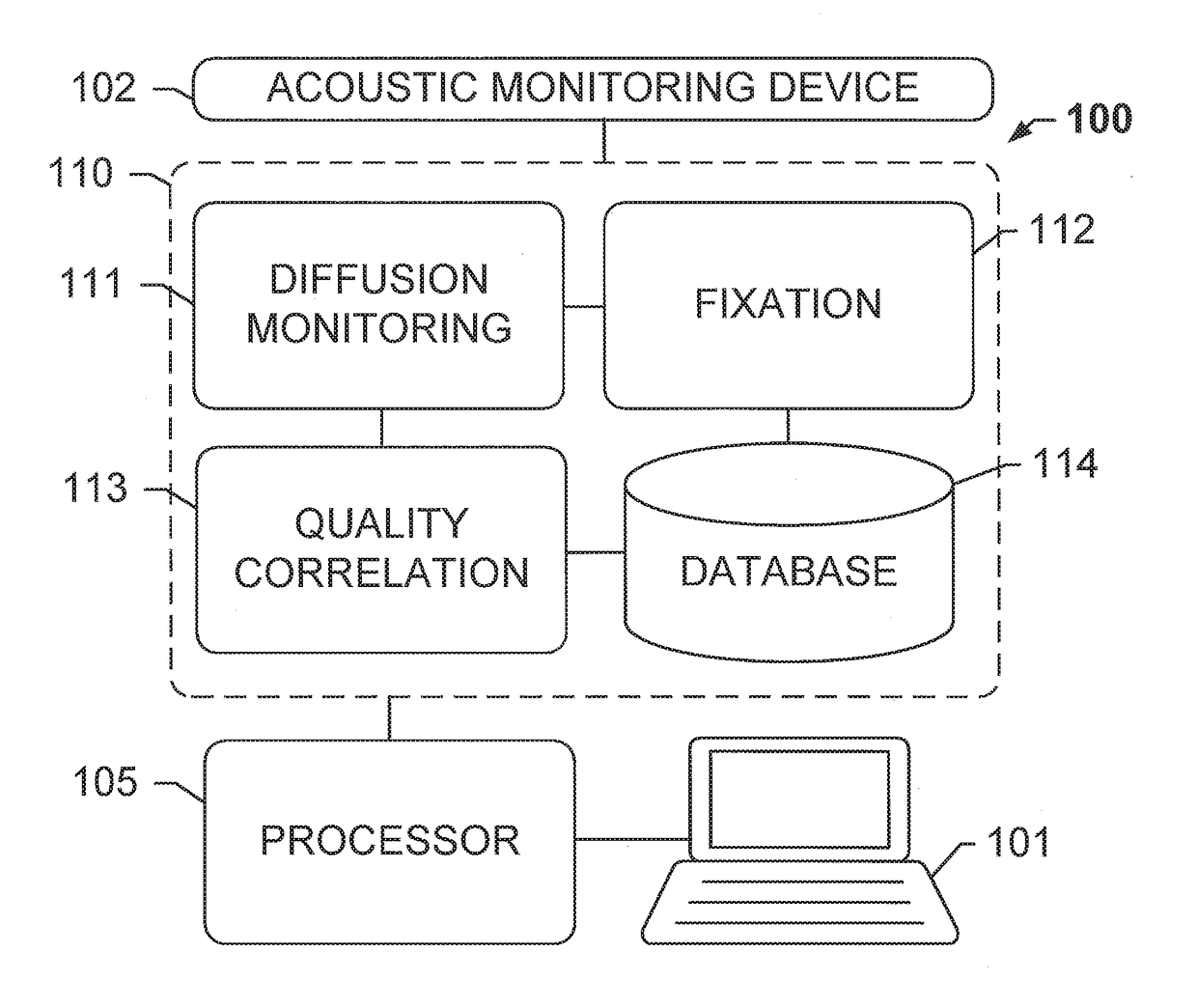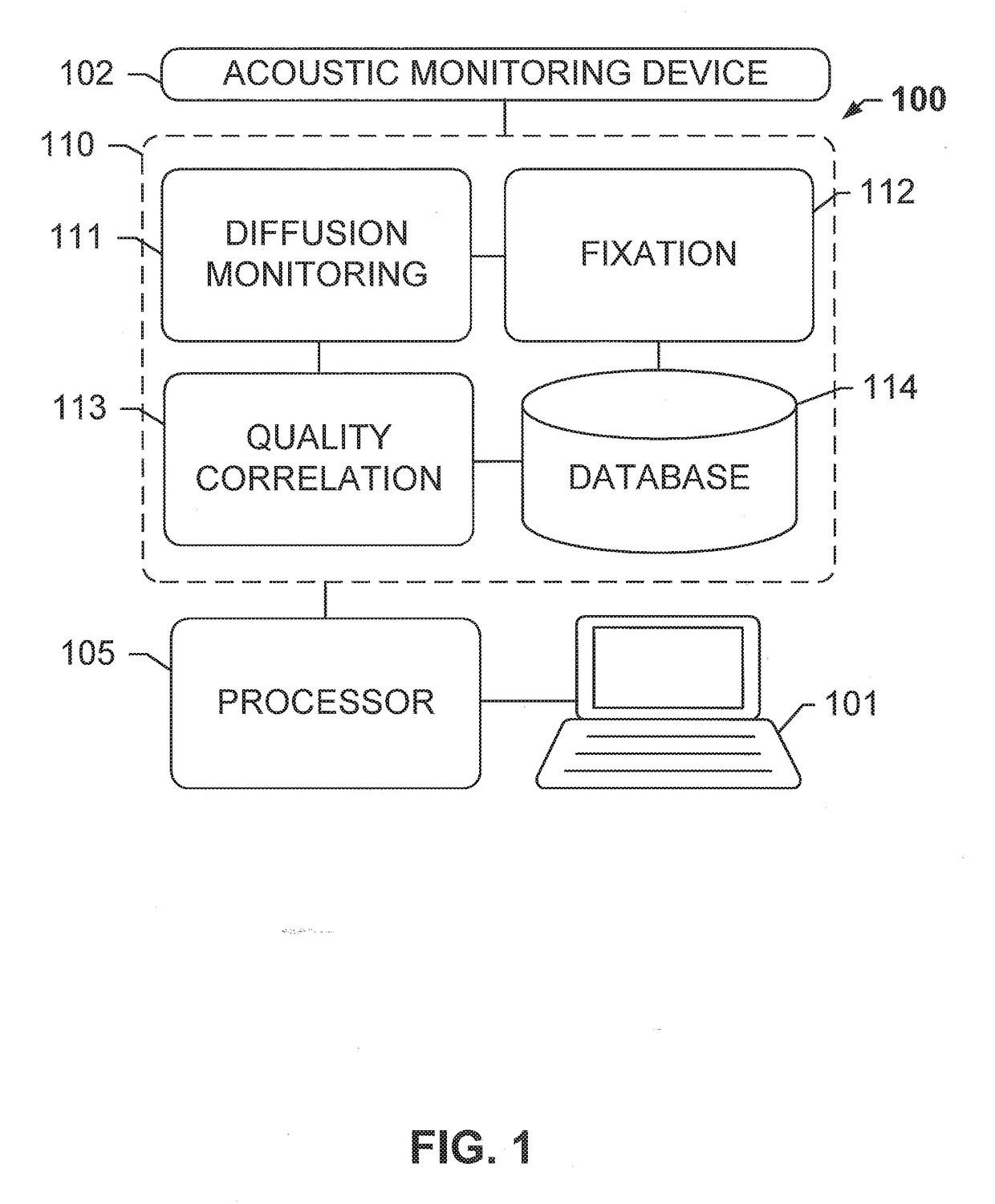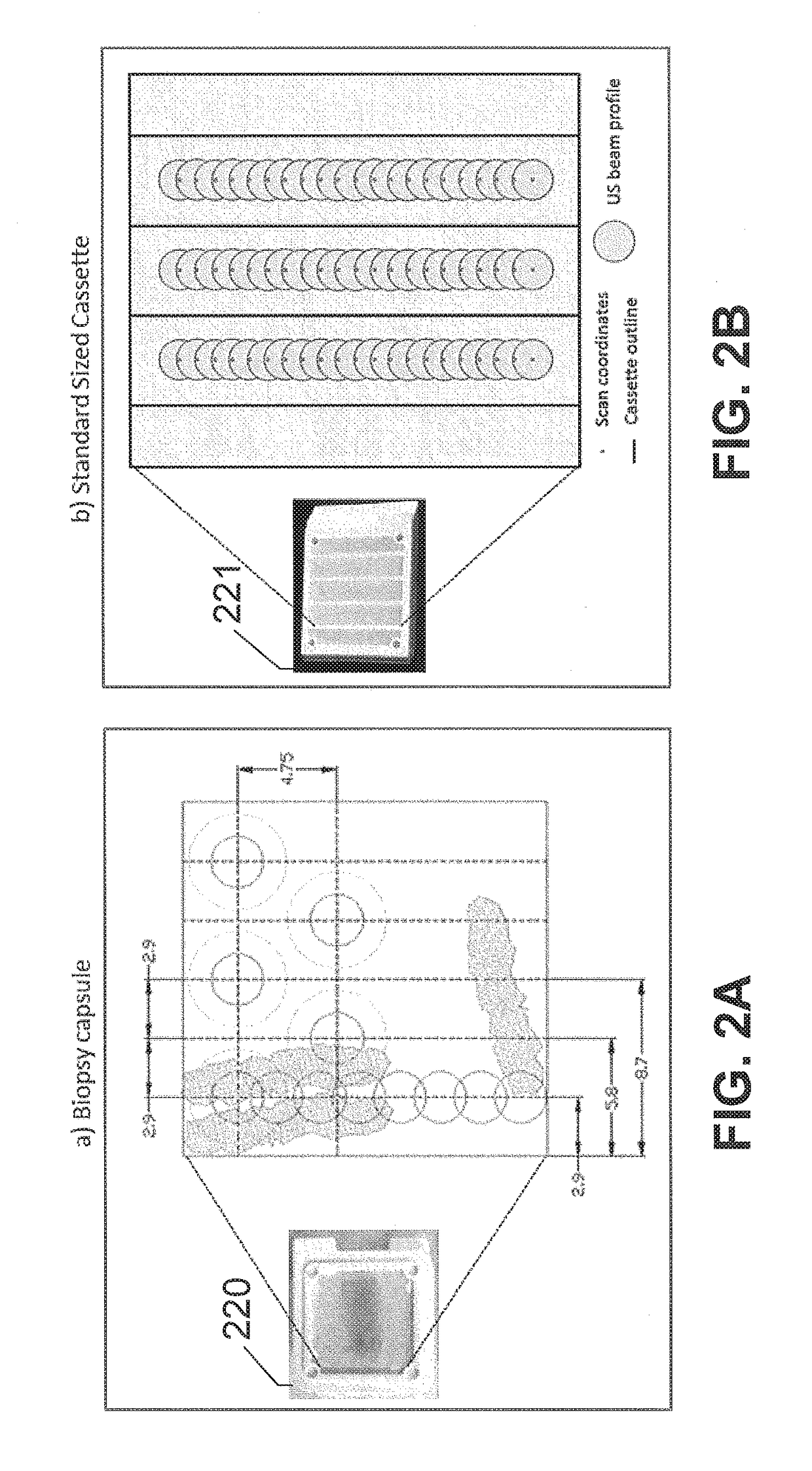Diffusion monitoring protocol for optimized tissue fixation
a tissue fixation and monitoring protocol technology, applied in the field of tissue specimen analysis, can solve the problems of poor tissue morphology, unbalanced samples, shrinking of cellular structures and condensing nuclei, etc., and achieves the effects of accurate prediction of the quality of fixation and subsequent staining, optimal fixation, and high quality staining
- Summary
- Abstract
- Description
- Claims
- Application Information
AI Technical Summary
Benefits of technology
Problems solved by technology
Method used
Image
Examples
embodiment 1
[0097] A method of fixing tissue sample, said method comprising: (a) immersing an unfixed tissue sample in a volume of a fixative solution at a temperature from 0 to 10° C.; (b) monitoring a rate of diffusion of the fixative solution into the tissue sample by: (b1) transmitting an ultrasonic acoustic signal through the tissue sample and detecting the ultrasonic acoustic signal after the ultrasonic signal has passed through the tissue sample; (b2) calculating the time of flight (TOF) of the ultrasonic acoustic signal; (b3) repeating (b1) and (b2) at a plurality of subsequent time points; (b4) calculating a rate of diffusion at least at each of the subsequent time points by analyzing a slope of a curve of the TOFs calculated from the ultrasonic acoustic signals measured at each of the time points; (b5) determining when the rate of diffusion falls below a predetermined threshold; and (c) after the rate of diffusion falls below the predetermined threshold, allowing the tissue sample to ...
embodiment 4
[0100] The method of embodiment 2 or 3, wherein the single exponential curve is a curve according to Equation I:
TOF(t, r)=C(r)+Ae−t / τ(r) (I), and
wherein the rate of diffusion is calculated according to Equation IIIa:
dTOF(t)dt(t=to)=-Aτe-to / τ,(IIIa)
wherein C is a constant offset, A is amplitude of decay, τ is a decay constant, t is diffusion time, and r is the spatial dependence, and t0 is diffusion time at the time point at which the rate of diffusion is calculated.
[0101]Embodiment 5: The method of any one of the previous embodiments 2-4, wherein the single exponential curve is a curve according to Equation I:
TOF(t, r)=C(r)+Ae−t / τ(r) (I), and
wherein the rate of diffusion is an amplitude-normalized rate of diffusion is calculated according to Equation IVa:
m~(t=to)=100(-1τe-to / τ),[%time],(IVa)
wherein C is a constant offset, A is amplitude of decay, τ is a decay constant, t is diffusion time, r is the spatial dependence, {tilde over (m)} is the amplitude-normalized rate of diffusio...
embodiment 9
[0105] The method of any of the foregoing embodiments, wherein the threshold rate of diffusion has been met when the rate of diffusion at a discrete time point calculated according to (b4) meets or exceeds the threshold rate of diffusion.
PUM
| Property | Measurement | Unit |
|---|---|---|
| temperature | aaaaa | aaaaa |
| temperature | aaaaa | aaaaa |
| fixation time | aaaaa | aaaaa |
Abstract
Description
Claims
Application Information
 Login to View More
Login to View More - R&D
- Intellectual Property
- Life Sciences
- Materials
- Tech Scout
- Unparalleled Data Quality
- Higher Quality Content
- 60% Fewer Hallucinations
Browse by: Latest US Patents, China's latest patents, Technical Efficacy Thesaurus, Application Domain, Technology Topic, Popular Technical Reports.
© 2025 PatSnap. All rights reserved.Legal|Privacy policy|Modern Slavery Act Transparency Statement|Sitemap|About US| Contact US: help@patsnap.com



